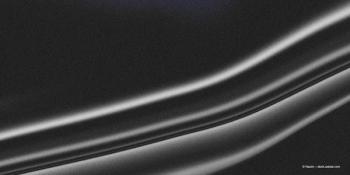
KSI-301 for exudative retinal disease showing safety, efficacy, and durability
Phase 1b data show improved vision and reduced macular edema in patients, with only 3 loading doses and minimal re-treatments.
A novel intravitreal anti-VEGF antibody biopolymer conjugate (KSI-301, Kodiak Sciences) designed to block all VEGF-A isoforms is showing excellent safety, strong efficacy, and considerable durability as a treatment for exudative retinal diseases, said Mark R. Barakat, MD, at the 2020 virtual meeting of the American Society of Retina Specialists.
Barakat, a study investigator who is in private practice with Retinal Consultants of Arizona, Phoenix, presented findings from cohorts of patients with exudative age-related macular degeneration (AMD), diabetic macular edema (DME), and macular edema associated with retinal vein occlusion (RVO) who had completed 44 weeks of follow-up in a phase 1b study of KSI-301.
“An important goal for the next generation of therapies for retinal disease is to provide longer treatment durability with the same safety and ease of administration that we have with our current medications. Antibody biopolymer conjugates such as KSI-301 are biologics engineered to meet this goal,” Barakat said. “The KSI-301 phase 1b trial includes 121 treatment naïve patients and represents over 100 patient-years of clinical experience. Based on the promising proof-of-concept data from this study, a pivotal trial is now underway comparing KSI-301 and aflibercept in patients with exudative AMD, and studies of KSI-301 for treating DME, edema related to RVO, and non-proliferative diabetic retinopathy are expected to begin later in 2020.”
Patients in the KSI-301 phase 1b trial were randomly assigned 1:3 to receive the anti-VEGF agent at a dose of 2.5 mg/50 µL or 5 mg/100 µL. All patients received 3 loading doses at monthly intervals and were eligible for re-treatment because of disease activity based on criteria specific to each disease. However, re-treatment for AMD was mandated at 6 months after the last treatment even if the patient did not meet the re-treatment criteria.
Barakat presented data from 31 patients with AMD who completed the week 44 visit. Baseline mean BCVA in this cohort was ~20/50, improved by almost 6 letters after the 3 loading doses, and was maintained at that level through week 44 with patients receiving just 1.32 re-treatments on average. A sustained reduction in OCT-measured central subfield thickness (CST) was achieved as well.
“Notably, almost half (44%) of re-treatments were done as mandatory injections after six months had elapsed since the prior dose,” Barakat said. Regarding the full AMD cohort (n = 49), “Only 18% of subjects required the first re-treatment at or before 3 months after their last dose and nearly 50% achieved a 6-month interval between injections. Notably, 68% of patients had a 6-month inter-injection interval at least once during follow-up.”
For the DME cohort, data from 44 weeks of follow-up was available for 18 patients. The results showed a similar sustained improvement in BCVA and CST.
The DME patients had a mean baseline BCVA of ~20/40 and achieved an improvement of 6.6 letters at week 44 after receiving a mean of just 0.61 re-treatments, with two-thirds of patients never requiring re-treatment during the follow-up.
As for the full DME cohort (n=33), only 24% of subjects required first re-treatment at or before 3 months, and 67% went 6 months or longer before receiving the first re-treatment.
“In fact, 45% of patients have not required re-treatment to date,” Barakat noted.
In the RVO cohort, 19 patients with a branch RVO and 14 patients with a central RVO had reached the 44-week follow-up. Mean baseline BCVA for the RVO patients was 20/80 and improved at week 44 to ~20/32, representing a 22.4-letter gain. The average number of re-treatments in the RVO cohort was 1.33, with only 36% of patients requiring more than 1 re-treatment.
Regarding the full RVO cohort (n=34), 33% required a first re-treatment at or before 2 months, and 56% achieved a first re-treatment interval of 4 months or longer.
“Notably, 71% of subjects with RVO achieved the 4-month or longer re-treatment interval at least once during follow-up,” Barakat said.
No concerning safety signals
The safety analysis included data for 130 patients who had received a total of 546 doses. The results showed KS-301 was well-tolerated and not associated with any drug-related serious adverse events.
“Although serious adverse events were reported, they were typical of the systemic events expected within the population of patients enrolled in the study and not considered drug-related,” Barakat said. “Other adverse events were mostly mild and consistent with the profile of intravitreal anti-VEGF agents.”
Two patients showed evidence of intraocular inflammation (rate per injection = 0.37%), but with the only trace to 1+ vitreous cells. Neither patient had evidence of vasculitis or retinitis or experienced vision loss, and both cases resolved completely.
Future development
In addition to the trials planned for KSI-301, Kodiak Sciences is developing additional ABC candidates for intravitreal injection. The platform includes KSI-501, a dual inhibitor of VEGF and interleukin-6 that is being developed to treat retinal vascular diseases with an inflammatory component, and KSI-601, a triple pathway inhibitor that will be investigated as a treatment for dry AMD.
Mark R. Barakat, MD
E: mark.barakat@gmail.com
Barakat receives consulting fees from Kodiak Sciences.
Newsletter
Keep your retina practice on the forefront—subscribe for expert analysis and emerging trends in retinal disease management.












































